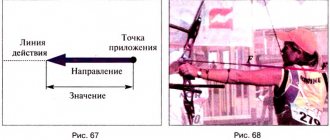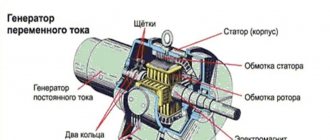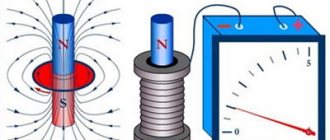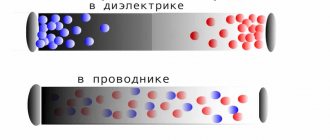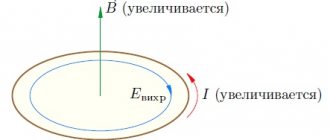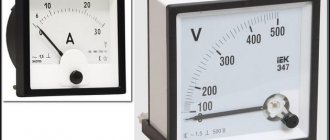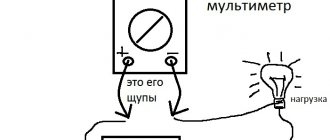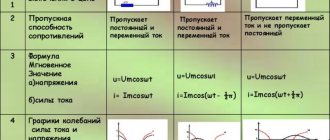- home
- Directory
- Physics
In order to characterize the speed at which work is performed ($A$), the concept of power (P) is used, which is defined as:
\[P=\frac{dA}{dt}\left(1\right),\]
expression (1) is the instantaneous power.
Instantaneous power can be defined as:
\[P=\overline{F}\overline{v}\left(2\right),\]
where $\overline{F}$ is the vector of the force that does the work; $\overline{v}$ is the velocity vector of the point to which the force $\overline{F}$ is applied.
Watt - SI unit of power
From the definition of power it is clear that the unit of measurement for power can be taken as follows:
\[\left[P\right]=\frac{J}{s}.\]
However, the unit of power has its own name: watt is a unit of power. Watt is denoted as W. Power is equal to 1 W if work equal to one joule is performed in one second. It should be noted that a watt is a unit of power in the International System of Units (SI). The watt is not a basic SI unit of measurement. Watt received its name in honor of the inventor J. Watt.
The watt as a unit of power measurement began to be used after 1882. Up to this point, power was calculated in horsepower or foot-pounds per minute. In the SI system, the watt has been a unit of measurement of power since 1960 (since the adoption of the system itself).
Using the definition of instantaneous power (2), it is easy to obtain the combination of basic units that make up the watt.
\[\left[P\right]=Н\cdot \frac{m}{s}=kg\cdot \frac{m}{s^2}\cdot \frac{m}{s}=kg\cdot \ frac{m^2}{s^3}.\]
Definitions (1) and (2) are mechanical definitions of power. Let us also highlight the instantaneous electrical power:
\[P=UI\ \left(3\right),\]
where $I$ is the current strength in a certain section of the circuit; $U$ is the voltage in the area under consideration. Watt is a unit of measurement of electrical power, and from definition (3), it follows that:
\[\left[P\right]=A\cdot B,\]
where $\left[I\right]=A$ (amps); $\left[U\right]=B$ (volts).
Basic concepts and laws of dynamics
The part of mechanics that studies the reasons that caused the acceleration of bodies is called dynamics
Newton's first law:
There are reference systems relative to which a body maintains its speed constant or is at rest if other bodies do not act on it or the action of other bodies is compensated.
The property of a body to maintain a state of rest or uniform linear motion with balanced external forces acting on it is called inertia.
The phenomenon of maintaining the speed of a body under balanced external forces is called inertia.
Inertial frames of reference
are systems in which Newton's first law is satisfied.
Galileo's principle of relativity:
in all inertial reference systems under the same initial conditions, all mechanical phenomena proceed in the same way, i.e.
obey the same laws. Mass
is a measure of the inertia of a body.
Force
is a quantitative measure of the interaction of bodies.
Newton's second law:
The force acting on the body is equal to the product of the body mass and the acceleration imparted by this force: $F↖{→} = m⋅a↖{→}$
The addition of forces consists of finding the resultant of several forces, which produces the same effect as several simultaneously acting forces.
Newton's third law:
The forces with which two bodies act on each other are located on the same straight line, equal in magnitude and opposite in direction: $F_1↖{→} = -F_2↖{→} $
Newton's III law emphasizes that the action of bodies on each other is in the nature of interaction. If body A acts on body B, then body B acts on body A (see figure).
Or in short, the force of action is equal to the force of reaction. The question often arises: why does a horse pull a sled if these bodies interact with equal forces? This is possible only through interaction with the third body - the Earth. The force with which the hooves press into the ground must be greater than the frictional force of the sled on the ground. Otherwise, the hooves will slip and the horse will not move. If a body is subjected to deformation, forces arise that prevent this deformation. Such forces are called elastic forces
.
Hooke's law
written in the form where k is the spring stiffness, x is the deformation of the body. The “−” sign indicates that the force and deformation are directed in different directions.
When bodies move relative to each other, forces arise that impede the movement. These forces are called friction forces.
A distinction is made between static friction and sliding friction.
The sliding friction force
is calculated by the formula where N is the support reaction force, µ is the friction coefficient. This force does not depend on the area of the rubbing bodies. The friction coefficient depends on the material from which the bodies are made and the quality of their surface treatment.
Static friction
occurs if the bodies do not move relative to each other. The static friction force can vary from zero to a certain maximum value
By gravitational forces
are the forces with which any two bodies are attracted to each other.
The law of universal gravitation:
any two bodies attract each other with a force directly proportional to the product of their masses and inversely proportional to the square of the distance between them.
Here R is the distance between the bodies. The law of universal gravitation in this form is valid either for material points or for spherical bodies.
Body weight
called the force with which the body presses on a horizontal support or stretches the suspension.
Gravity
- this is the force with which all bodies are attracted to the Earth: With a stationary support, the weight of the body is equal in magnitude to the force of gravity: If the body moves vertically with acceleration, then its weight will change. When a body moves with acceleration directed upward, its weight can be seen that the weight of the body is greater than the weight of the body at rest.
When a body moves with acceleration directed downward, its weight. In this case, the weight of the body is less than the weight of the body at rest.
Weightlessness
is the movement of a body in which its acceleration is equal to the acceleration of gravity, i.e.
a = g. This is possible if only one force acts on the body - gravity. An artificial Earth satellite
is a body that has a speed V1 sufficient to move in a circle around the Earth. Only one force acts on an Earth satellite - the force of gravity directed towards the center of the Earth. The
first escape velocity
is the speed that must be imparted to the body in order for it to revolved around the planet in a circular orbit. where R is the distance from the center of the planet to the satellite. For the Earth, near its surface, the first escape velocity is equal to
1.3. Basic concepts and laws of statics and hydrostatics
A body (material point) is in a state of equilibrium if the vector sum of the forces acting on it is equal to zero. There are 3 types of equilibrium: stable, unstable and indifferent.
If, when a body is removed from an equilibrium position, forces arise that tend to bring this body back, this is
a stable equilibrium.
If forces arise that tend to take the body even further from the equilibrium position, this is
an unstable position
;
if no forces arise - indifferent
(see Fig. 3).
When we are not talking about a material point, but about a body that can have an axis of rotation, then in order to achieve an equilibrium position, in addition to the equality of the sum of forces acting on the body to zero, it is necessary that the algebraic sum of the moments of all forces acting on the body be equal to zero. Here d is the force arm. The force arm
d is the distance from the axis of rotation to the line of action of the force.
Lever equilibrium condition:
the algebraic sum of the moments of all forces rotating the body is equal to zero.
Pressure
is a physical quantity equal to the ratio of the force acting on a platform perpendicular to this force to the area of the platform:
is valid for liquids and gases :
pressure spreads in all directions without changes. If a liquid or gas is in a gravity field, then each layer above presses on the layers below, and as the liquid or gas is immersed inside, the pressure increases. For liquids where ρ is the density of the liquid, h is the depth of penetration into the liquid.
A homogeneous liquid in communicating vessels is established at the same level. If liquid with different densities is poured into the elbows of communicating vessels, then the liquid with a higher density is installed at a lower height. In this case, the heights of the liquid columns are inversely proportional to the densities:
Hydraulic Press
is a vessel filled with oil or other liquid, in which two holes are cut, closed by pistons. The pistons have different areas. If a certain force is applied to one piston, then the force applied to the second piston turns out to be different. Thus, the hydraulic press serves to convert the magnitude of the force. Since the pressure under the pistons must be the same, then
Then A1 = A2.
A body immersed in a liquid or gas is acted upon by an upward buoyant force from the side of this liquid or gas, which is called the
Archimedes force
The magnitude of the buoyancy force is established by
Archimedes' law
: a buoyant force acts on a body immersed in a liquid or gas, directed vertically upward and equal to the weight of the liquid or gas displaced by the body: where ρliquid is the density of the liquid in which the body is immersed; Vsubmerg is the volume of the submerged part of the body.
Body floating condition
- a body floats in a liquid or gas when the buoyant force acting on the body is equal to the force of gravity acting on the body.
1.4. Conservation laws
The momentum of a body
is a physical quantity equal to the product of the mass of the body and its speed:
Momentum is a vector quantity.
=kg m/s. Along with body impulse, force impulse is often used.
This is the product of a force and the time of its action. The change in the momentum of a body is equal to the impulse of the force acting on this body.
For an isolated system of bodies (a system whose bodies interact only with each other), the law of conservation of momentum
: the sum of the momentum of the bodies of an isolated system before interaction is equal to the sum of the momentum of the same bodies after interaction.
Mechanical work
is a physical quantity that is equal to the product of the force acting on the body, the displacement of the body and the cosine of the angle between the direction of the force and the displacement:
Power
is the work done per unit of time:
The ability of a body to do work is characterized by a quantity called energy.
Mechanical energy is divided into
kinetic and potential.
If a body can do work due to its motion, it is said to have
kinetic energy.
The kinetic energy of the translational motion of a material point is calculated by the formula If a body can do work by changing its position relative to other bodies or by changing the position of parts of the body, it has
potential energy.
An example of potential energy: a body raised above the ground, its energy is calculated by the formula where h is the height of the rise
Compressed spring energy:
where k is the spring stiffness coefficient, x is the absolute deformation of the spring.
The sum of potential and kinetic energy is mechanical energy.
For an isolated system of bodies in mechanics,
the law of conservation of mechanical energy
: if friction forces (or other forces leading to energy dissipation) do not act between the bodies of an isolated system, then the sum of the mechanical energies of the bodies of this system does not change (the law of conservation of energy in mechanics). If there are friction forces between the bodies of an isolated system, then during interaction part of the mechanical energy of the bodies turns into internal energy.
Power units in other unit systems
In the GHS system (a system in which the main units are: centimeter, gram and second), the unit of measurement of power does not have a special name. In this system:
\[\left[P\right]=\frac{erg}{s},\]
where $erg$ is the unit of measurement of energy (work) in the CGS.
\[1\ W={10}^7\frac{erg}{s}.\]
Horsepower (hp) is a non-system unit of measurement of power. There are several different units around the world called “horsepower”. In our country we mean “metric horsepower”, they consider:
\[1W\approx 1.36\cdot {10}^{-3}hp\] \[1\hp=735.49875\W\]
This unit has practically been withdrawn from use in calculations. However, it is still used, for example, in calculating vehicle taxes.
How to measure variable power?
The use of electricity is one example of the use of power that changes over time.
Minimum electrical energy needs are observed during the day, but are accompanied by peak surges in the evening for cooking, lighting and heating.
There are three ways of expressing power that are important here:
- instantaneous power P m g P_{mg} Pmg;
- average power P with р P_{avg} Pav;
- peak P p and k P_{peak} Ppeak.
Instantaneous power
This is power now, at a given moment in time.
If we consider the equation for power P = △ E △ t P\;=\;\frac{\triangle E}{\triangle t} P=△t△E, then this measurement is obtained when Δ t Δt Δt is very few.
Average power
This is the power that is calculated over a very long time, that is, when Δt Δt Δt in the power equation is very large.
Peak power
This is the maximum value that instantaneous power can have in a particular system over a long period.
Car engines and stereo systems are examples of systems capable of delivering peak power that is much higher than their rated average power. However, this is usually only possible for a short time to avoid damage to the devices.
Efficiency
Efficiency – efficiency factor. Usually denoted by the Greek symbol \(\eta\) "this". It has no units of measurement and is expressed either as a decimal fraction or as a percentage.
Notes:
- A percentage is a fraction whose denominator is 100.
- Efficiency is either a proper fraction or a fraction equal to unity.
Calculate the coefficient \(\eta\) for a device, mechanism or process.
\[ \large \boxed{ \eta = \frac{ A_{\text{useful}}}{ A_{\text{all}}} }\]
\(\eta\) – efficiency;
\( \large A_{\text{useful}} \left(\text{J} \right)\) – useful work;
\(\large A_{\text{all}} \left(\text{J} \right)\) – all the energy expended to perform the work;
Note: Efficiency is often less than unity, since there is always energy loss. The efficiency cannot be greater than one, since this contradicts the law of conservation of energy.
\[ \large \boxed{ \eta \leq 1 }\]
The quantity \(\eta\) is a fractional quantity. If the numerator and denominator of a fraction are divided by the same number, the resulting fraction will be equal to the original. Using this fact, you can calculate efficiency using power:
\[ \large \boxed{ \eta = \frac{ P_{\text{useful}}}{ P_{\text{all spent}}} }\]
Relation to amperes and volts
In addition to the two formulas discussed above, another one is often used for determination. Its field of application is electrical. There is also a certain relationship between power and the basic quantities characterizing electric current.
Knowing the voltage and current, you can accurately determine the electrical power. To do this, simply multiply two known values. For example, if the current is 5 amperes and the voltage is 50 volts, then the required value in this case will be equal to 250 W. This number is obtained by multiplying 5 by 50.
The formula for determining the electrical quantity is written as P=IV. The letter designations are as follows:
- P—electric power;
- I - current strength;
- V is voltage.
If you use a voltmeter and an ammeter, you can determine the power. But to find out the power of a section of a circuit, it is not necessary to carry out computational operations. There is a special measuring device, which, by analogy with a voltmeter and ammeter, is called a wattmeter. It is enough to plug it into the network to find out the value.
Work done by gravity - potential energy difference
Let's now consider the following example. An apple weighing 0.2 kg fell onto a garden table from a branch located at a height of 3 meters from the surface of the earth. The tabletop is located at a height of 1 meter from the surface (Fig. 3). Let's find the work done by gravity in this process.
Rice. 3. The figure shows the initial 1st position of the body (apple) and its final 2nd position, marked heights for calculating the work of vertical movement of the body
Let's calculate the potential energy of the apple before it falls and the energy of the apple on the table top.
\( E_{p1} \left(\text{J} \right) \) – initial potential energy of the apple;
\( E_{p2} \left(\text{J} \right) \) – final potential energy of the apple;
Note: Work can be calculated through the difference in the potential energy of the body.
We will calculate potential energy using the formula:
\[ \large E_{p} = m \cdot g \cdot h\]
\( m \left( \text{kg}\right) \) – mass of the apple;
The quantity \( \displaystyle g \approx 10 \left(\frac{\text{m}}{c^{2}} \right) \) is the acceleration of free fall.
\( h \left( \text{m}\right) \) – the height at which the apple is located relative to the surface of the earth.
The initial height of the apple above the ground is 3 meters
\[ \large E_{p2} = 0.2 \cdot 10 \cdot 3 = 6 \left(\text{J} \right) \]
Potential energy of an apple on the table
\[ \large E_{p1} = 0.2 \cdot 10 \cdot 1 = 2 \left(\text{J} \right) \]
Now let's find the difference in the potential energy of the apple at the end of the fall and before it begins.
\[ \large \Delta E_{p} = E_{p2} — E_{p1} \]
\[ \large \Delta E_{p} = 2 – 6 = — 4 \left(\text{J} \right) \]
It is important to remember: When a body falls to the ground, its potential energy decreases. The force of gravity does positive work!
To make the work positive, we will additionally add a minus sign on the right side of the formula before \( \Delta E_{p}\).
\[ \large \boxed{ A = — \Delta E_{p} }\]
This means that the work required by gravity for an apple weighing 0.2 kg to fall from a height of 3 m to a height of 1 meter is equal to 4 Joules.
Notes:
- If a body falls to the ground, the work done by gravity is positive;
- When we lift a body above the ground, we do work against gravity. Our work is positive, and the work of gravity will be negative;
- Gravity is a conservative force. For conservative forces, we add a minus sign in front of the potential energy difference;
- The work done by gravity does not depend on the trajectory along which the body moved;
- The work for the force \(\displaystyle F_{\text{heavy}}\) depends only on the difference in heights at which the body was at the final and initial moments of time.
Figure 4 illustrates the fact that for the force \(\displaystyle F_{\text{heavy}}\) the work depends only on the difference in height and does not depend on the trajectory along which the body moved.
Rice. 4. The height difference between the initial and final position of the body in all cases in the figure is the same, therefore, the work of gravity for the presented cases will be the same

